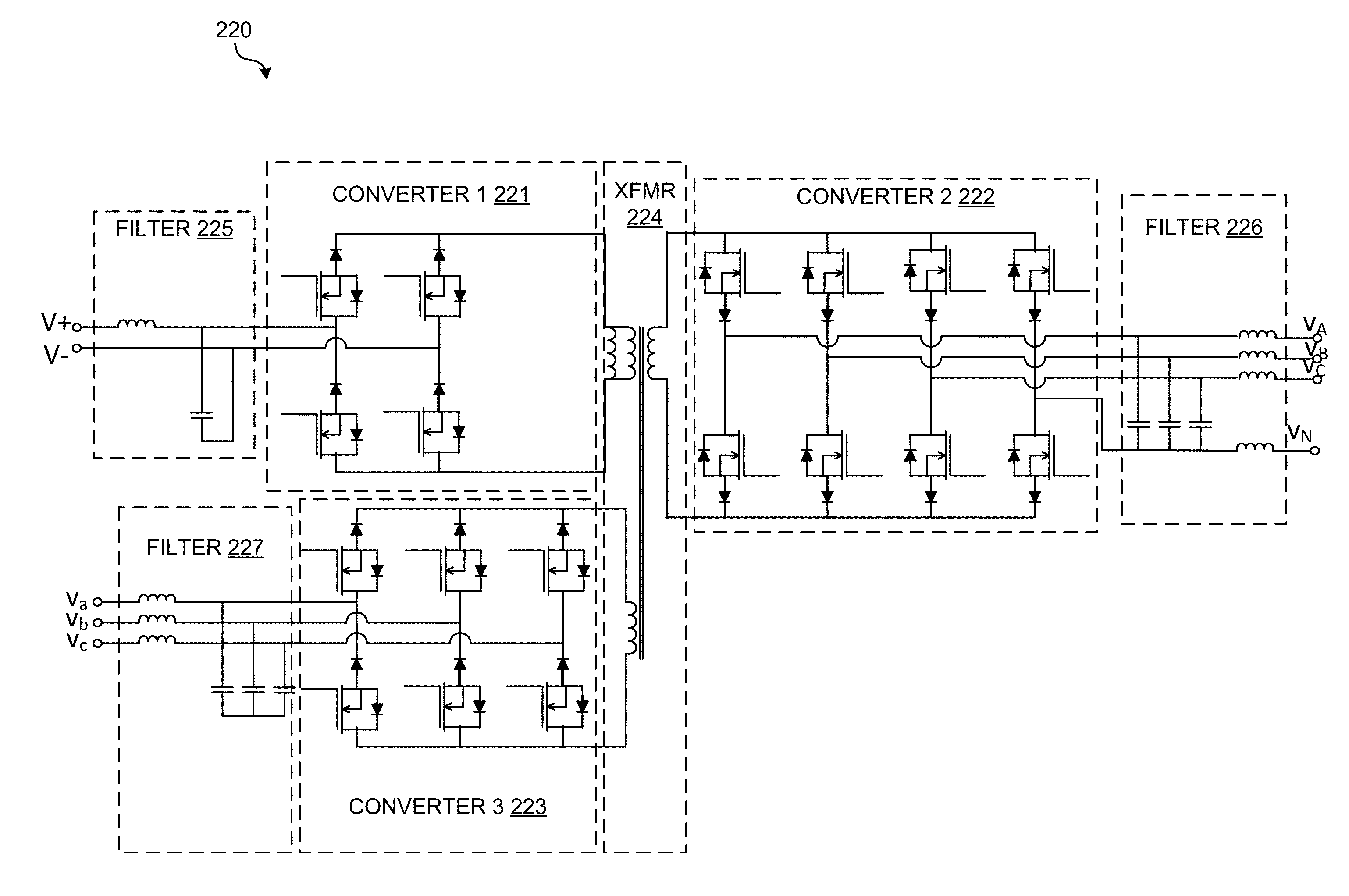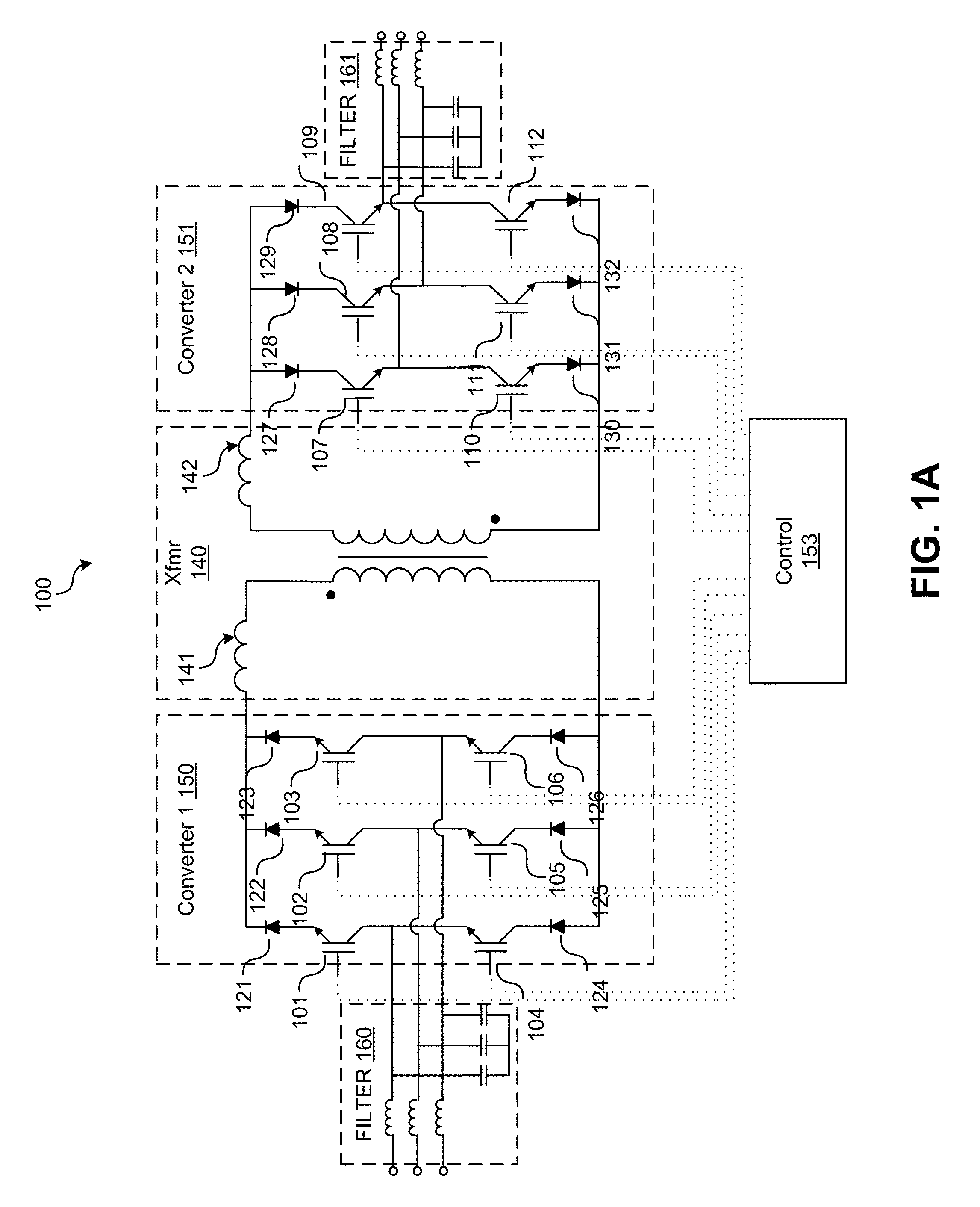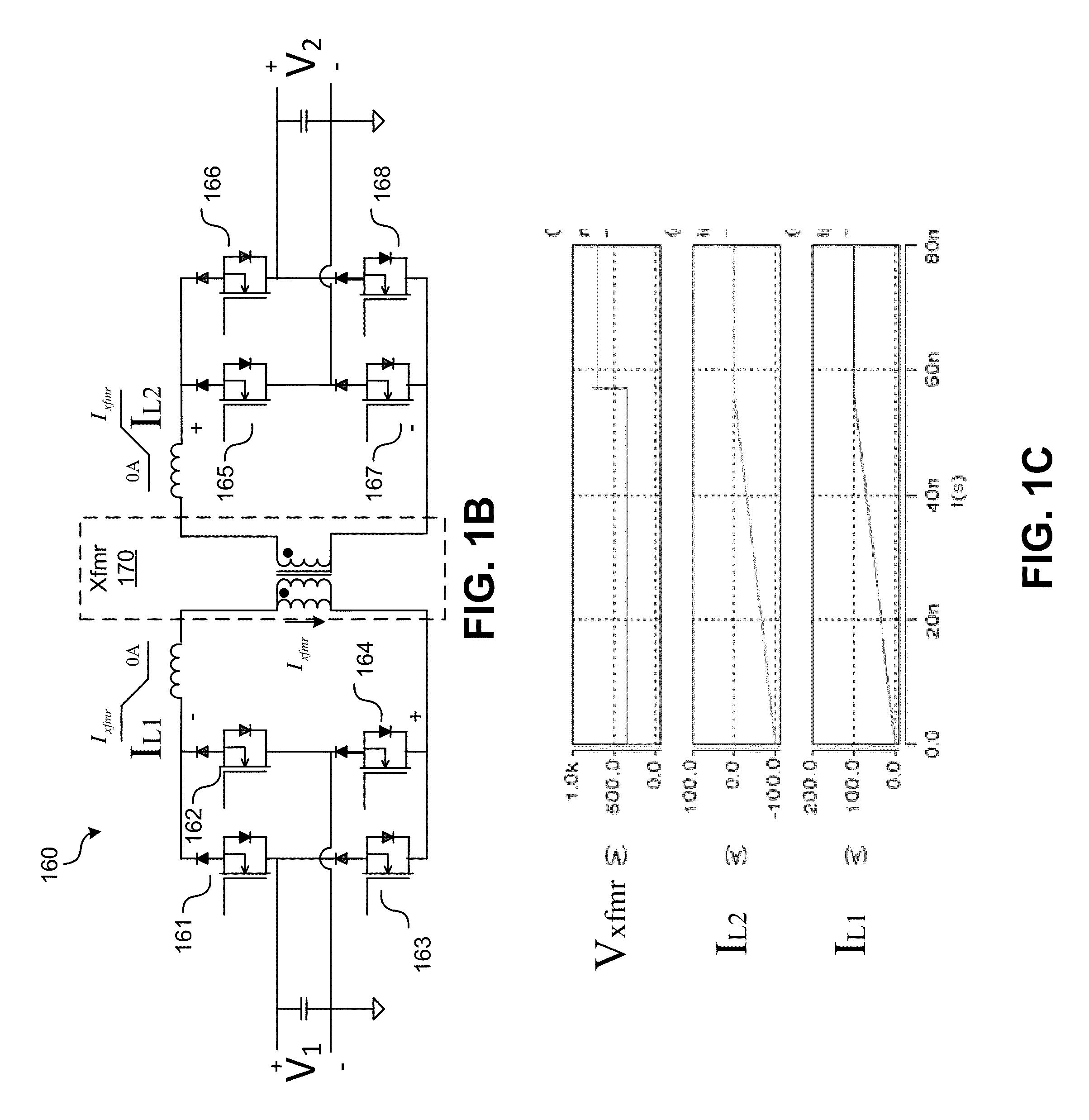Isolated dynamic current converters
- Summary
- Abstract
- Description
- Claims
- Application Information
AI Technical Summary
Benefits of technology
Problems solved by technology
Method used
Image
Examples
Embodiment Construction
[0008]Isolated Dynamic-Current (“Dyna-C”) converters are converters that convert incoming 3-phase AC or DC power to a mix of DC and AC power via an isolation link. In various embodiments, the isolation is a high-frequency transformer. Various embodiments provide bi-directional converters that are current source based with dynamic current response capability. Various embodiments may provide AC / AC, DC / DC, AC / DC, or DC / AC power conversions. Some embodiments that convert AC power to DC power may comprise two-quadrant switches that block voltages in both directions but conduct current in only one direction. The topology is minimal and the costs are low. Isolated Dyna-C converters provide fast current responses and keep the losses low by using a simplified two-stage conversion and providing a magnetizing current that is dynamically controllable and tailored to the load. Various embodiments may be stacked to scale to higher voltages. In further embodiments, inductive or capacitive VAR comp...
PUM
 Login to View More
Login to View More Abstract
Description
Claims
Application Information
 Login to View More
Login to View More - R&D
- Intellectual Property
- Life Sciences
- Materials
- Tech Scout
- Unparalleled Data Quality
- Higher Quality Content
- 60% Fewer Hallucinations
Browse by: Latest US Patents, China's latest patents, Technical Efficacy Thesaurus, Application Domain, Technology Topic, Popular Technical Reports.
© 2025 PatSnap. All rights reserved.Legal|Privacy policy|Modern Slavery Act Transparency Statement|Sitemap|About US| Contact US: help@patsnap.com



